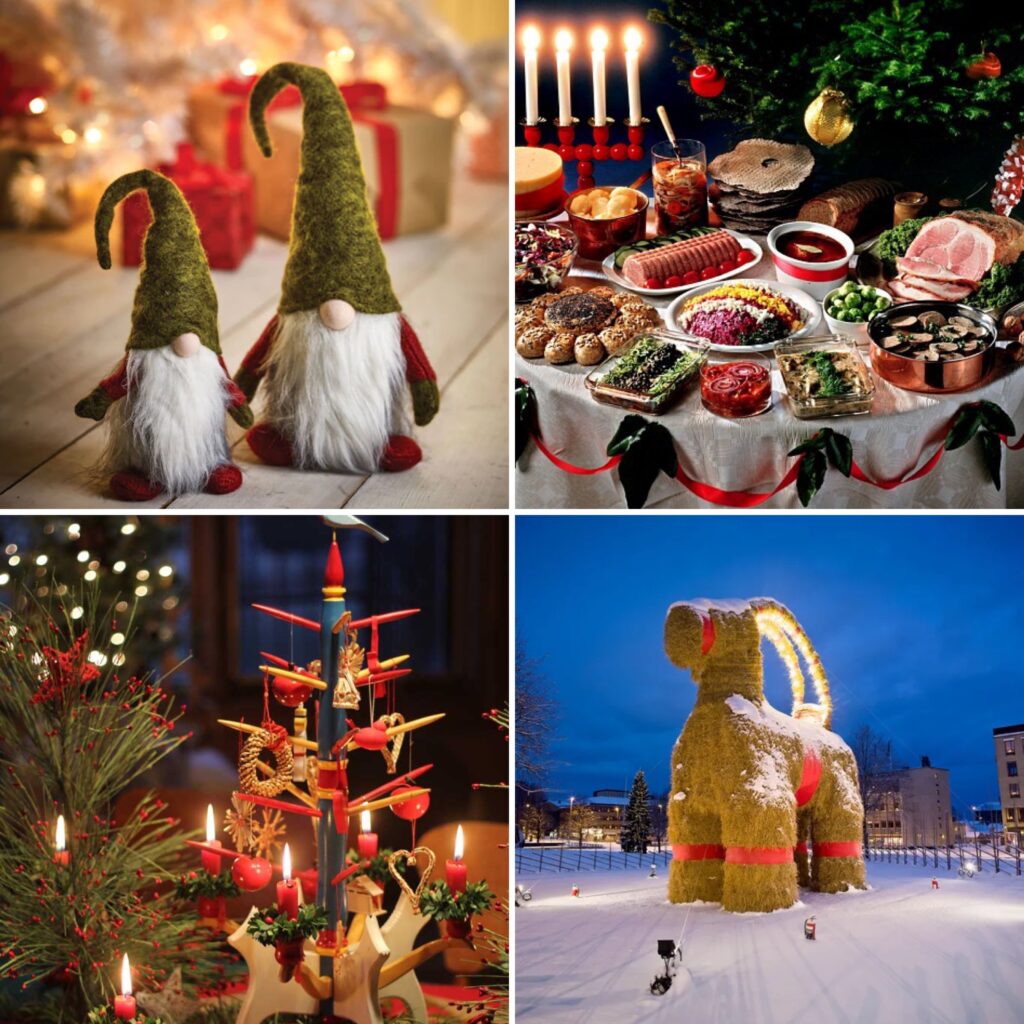
Sweden is up for the last month of FOODANDLIT 2023.
Such a perfect fit for December. This stack is part of my haul from the library!
🇸🇪Sweden is in the geographical region known as Scandinavia in northern Europe. Lush, large forests cover half of the country and over 100,000 lakes dot the landscape. The lakes, and over 24,000 islands, are all open to the public through Sweden’s tradition of right to public access.
Sweden is 977 miles (1,572 kilometers) long and is bordered by Norway on the west and Finland to the east. Three stretches of water separate Sweden from Denmark—the Skagerrak, the Kattegat, and the Öresund straits.
Sweden’s Arctic north has been called the “land of the midnight sun,” because during the summer months the sun never sets. Even in the capital of Stockholm in the south, the summer nights last only four hours and the sky doesn’t deepen beyond twilight. But winter lasts until May and the nights are long and the days are short.
In the fall and spring, there are spectacular light shows in northern Sweden known as the “aurora borealis,” or “northern lights.” The dazzling green or red lights, which fill the late night sky, are caused by collisions of tiny particles high in the Earth’s atmosphere.
One of the many places I’d love to visit.

SWEDISH CHRISTMAS
Everyone Watches the Same TV Show Every Year..
Every Christmas Eve at 3 p.m., Swedes gather around the TV to watch a series of old Donald Duck (“Kalle Anka”) Disney cartoons from the 1950s. It’s pretty much the exact same cartoons every year and even grown-ups join in. Bizarre? Sure. Kitschy and sweet? You bet. Main Meal Is Served Buffet-style.
The Swedish gnome lives in Sweden, the legend says. They live in and around the houses and sheds on farms and remote houses according to the gnome folklore. If you are wise you will show them “due respect”. If you respect him, he will protect your household from accidents and disasters. He might play tricks on you if you annoy him.
Swedish Build Up the Anticipation…

Although the main event is celebrated on Christmas Eve, Swedes know that waiting and preparing is half the fun. On Advent Sunday (four Sundays before Christmas), the first of four candles is lit to start the holiday countdown, usually while enjoying a mug of glögg (mulled wine) and gingerbread cookies. Then, every Sunday an additional candle is lit until finally, it’s Christmas!
Mulled Wine recipe https://www.gimmesomeoven.com/mulled-wine-recipe/
You may be familiar with the Swedish concept of smorgasbord, and on Christmas Eve Swedes celebrate with a julbord. Fish features heavily (smoked salmon, pickled herring and lye-fish), plus ham, sausages, ribs, cabbage, potatoes and of course, meatballs. There’s also a delicious dish aptly named Janssons temptation —a potato dish made with cream and anchovies. In other words, there’s basically something for everyone (even picky Aunt Sally).

The Holiday Season Ends on January 13…
Just as there’s a clear beginning to the festivities (the first advent), there’s also a defined end. On January 13th (St. Knut’s Day), families take down the decorations and dance around the Christmas tree, before tossing it out the window. They also finish eating any remaining Christmas treats. (Maybe just check with your co-op before throwing your tree out.)
St. Lucia Day (December 13) is a festival of light that kicks the Christmas season into high gear. Traditionally, the celebration involves a girl wearing a white goan and a crown of candles leading a procession of candle-bearing women singing songs about the saint. Prior to the 1700s (when calendar reforms shifted things around a little), St. Lucia’s feast day coincided with the winter solstice, hence the association with the coming of light. You can see a St. Lucia procession in many Nordic countries—in big cities like Oslo and Stockholm, there are often several celebrations happening.
Once the giver of Christmas gifts, the Yule goat has now been mostly crowded out of that department by various iterations of St. Nick, tomtes, and the like. But In Finland, the name Joulupukki (Finnish for “Yule goat”) persists as the gift-giver’s name. For a more traditional Christmas goat, you can check out enormous Yule goats in many Swedish town squares—the most famous one, in Gälve, was first erected in 1966.

Favorite Fiction Read of Sweden ~~ While men have long been credited with producing the first abstract paintings, the true creator was actually a woman – Swedish artist Hilma af Klint, who was inspired by her mystic visions. Acclaimed authors Sofia Lundberg, Alyson Richman, and M.J. Rose bring her story to life in this groundbreaking novel.
Early 1900s: The world belongs to men, and the art world in Stockholm, Sweden, is no different, until Hilma af Klint brings together a mysterious group of female painters and writers—Anna, Cornelia, Sigrid, and Mathilda—to form their own emotional and artistic support system. The members of the Friday Night Club find themselves thrust into uncharted territory when Hilma and her best friend, Anna, begin dabbling in the occult, believing that through séances they can channel unseen spirits to help them achieve their potential as artists. “The Five,” as Hilma referred to them, was a group of immensely talented, fascinating women whose lives and work were cast into obscurity…until now.
The Present: Over a century later, an associate curator at the Guggenheim Museum, Eben Elliot, brings the Hilma af Klint show to New York where he uncovers questions about the Five and how the modern day art world is funded, which puts him in a precarious position both emotionally and professionally, as he witnesses how history can be manipulated.
The Friday Night Club is an illuminating historical novel that explores destiny, passion, and the threads that connect five women as they challenge artistic and societal traditions.
Such a fun country to study.


